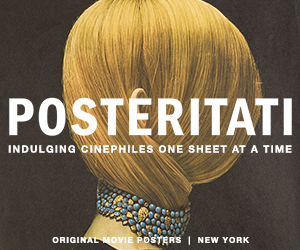Luis Buñuel followed up his debut short film, Un Chien Andalou, with this feature-length effort, a less dreamlike and more scandalous attack on all things religious and bourgeois.
After a lengthy prologue detailing the lethal qualities of the scorpion, the movie settles on a rocky Spanish island. Here, a group of Catholic bishops sitting on the crags suddenly transforms into skeletons, while a troupe of bedraggled men marches across the landscape repeatedly falling down. We also meet what could be considered the main characters: a man (Gaston Modot) and woman (Lya Lys) who passionately roll around in the mud, only to be violently separated by a passing, well-dressed crowd. (Watching her get dragged away, the man has a vision of roiling goop and we hear the sound of a flushing toilet.)
If there is a plot to L’Age d’Or, it involves the efforts of these two to reunite. They eventually do at a high-society party, where those same well-heeled folks from the island politely listen to an orchestra, ignoring the flame that bursts from the kitchen and the maid who comes staggering out, falls down, and dies.
L’Age d’Or, which translates as “the Golden Age,” occasionally includes the sort of potent imagery that defined Un Chien Andalou. I’d put the sight of Modot’s hand stroking Lys’ face, only for the palm to turn and reveal that it is missing a few fingers, in that category. Yet overall it lacks the mesmerizing fluidity that the short film had. If Un Chien Andalou felt as if it could have been impulsively emerging from some dark corner of your own mind, L’Age d’Or feels more blatantly strategic, even belabored. I may not have gotten some of the jokes because of a lack of context, but I could still feel that the jokes had been going on for a long time.
When it comes to this sort of satire, understanding the context, of course, is key. Without it, it’s hard to know whether to be amused or outraged by the provocative postscript with which the movie concludes. We’re told, via onscreen text, that a group of “scoundrels” have kidnapped some young women and taken them to a wintry castle to partake in Marquis de Sade-style orgies. In the film’s final moments, we see a figure identified as a character from a de Sade novel, but resembling Jesus Christ, emerge from the castle looking dazed. The final shot is of a cross that has scalps—presumably those of the young women—nailed to it. I’m familiar with the notion of nailing one’s sins to the cross, but I’m guessing Buñuel has something else in mind.



